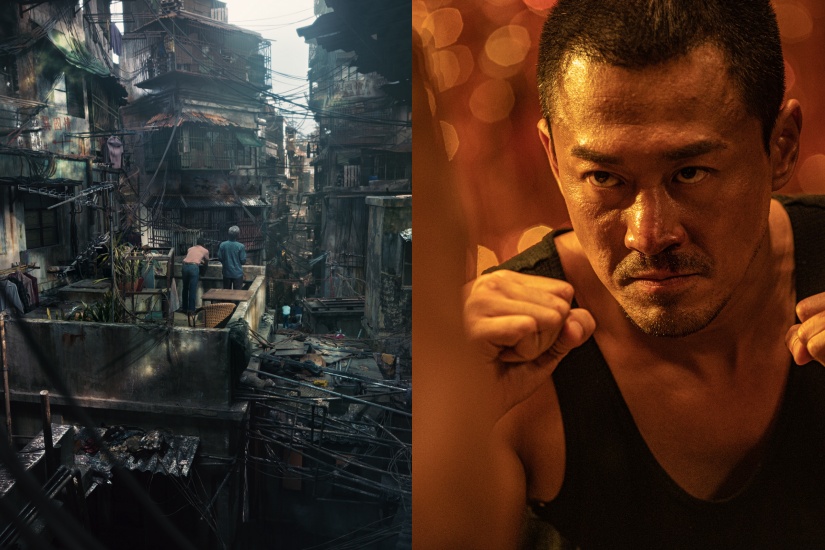The long-awaited film “Twilight of the Warriors: Walled In” premiered in early May, receiving praise from all sectors and a flood of positive reviews. It even broke a new record in Hong Kong cinema by surpassing 20 million Hong Kong dollars in box office sales in a short period of time.
The movie “Kowloon Walled City” is adapted from Yu Er’s original novel “Kowloon Walled City,” incorporating Situ Jianqiao’s comic style. Produced by Zhuang Cheng and Yip Wai-sin, directed by Cheng Baorui, with Gu Yuanjian as the action director, screenplay by Ou Jian’er, Chen Dali, Shen Junqian, and Li Jun, art direction by Mak Kwok-keung. Starring Louis Koo, Raymond Lam, Liu Junqian, Ng Yuen-lung, Hu Zitong, and Zhang Wenjie, with special appearances by Simon Yam, Anthony Wong, Liao Ziyu, Zhu Baikang, Cai Siyun, and Sammo Hung.
The story is set against the backdrop of “Kowloon Walled City” and tells the story of the young man Chen Luojun (played by Raymond Lam) who accidentally enters the walled city and befriends a group of brothers: Xin Yi (played by Liu Junqian), Twelve (played by Hu Zitong), Si Zai (played by Zhang Wenjie), and others. The brothers, led by Long Tornado (played by Louis Koo), fiercely resist the invasion of the evil boss (played by Sammo Hung), engaging in a series of fierce battles to defend the walled city, their home.
The “Kowloon Walled City” evolved from a small lookout post and fort into a battleground for military control, then descended into a state of lawlessness as a besieged city. Cheng Baorui described it as “like a fallen castle.” Why is this “no man’s land” so attractive? And what are the must-see scenes that the movie reproduces today?
1. Recreate the authentic scenes of Kowloon Walled City
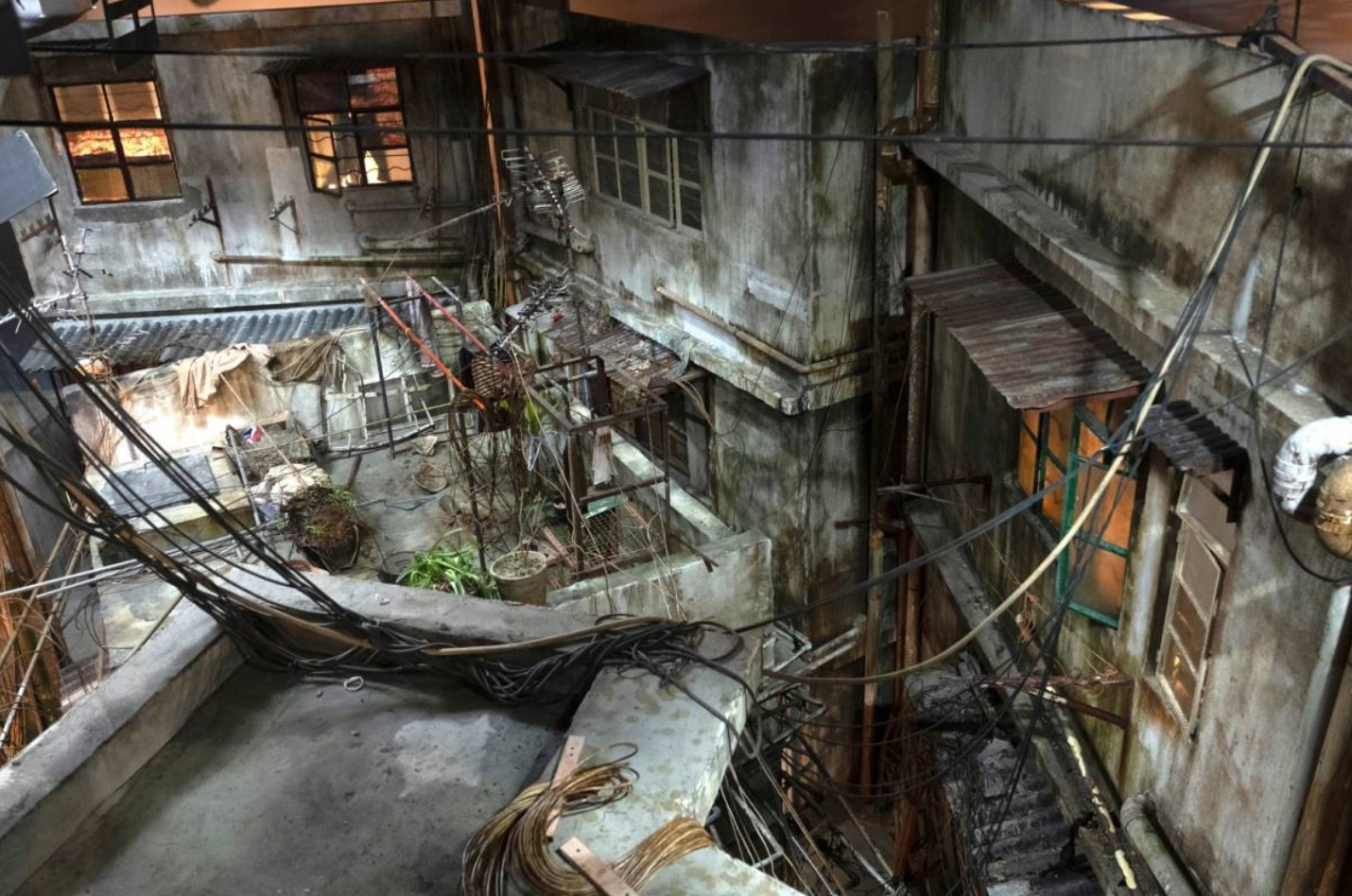
Even those who have not experienced the era of “Kowloon Walled City” are likely familiar with it – the densely packed and chaotic buildings attracted many photographers from around the world to come and capture it on film, leaving a lasting impression.
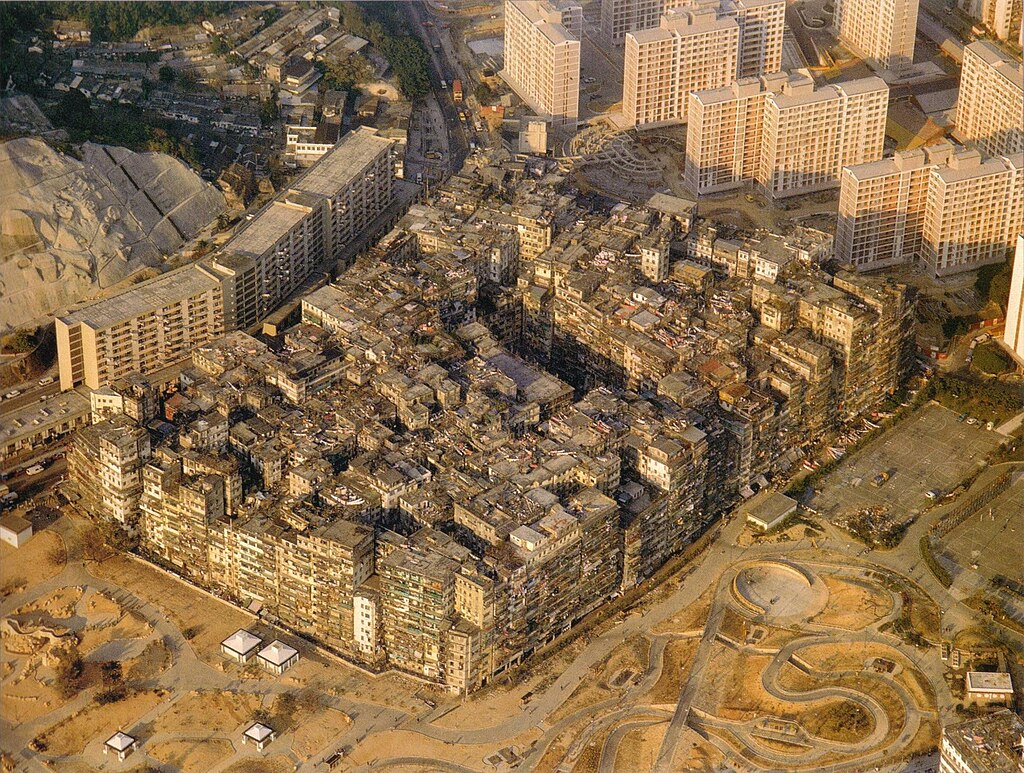
To recreate this important scene, before the start of filming, the team read many books and materials, invited many people who had lived in the walled city to share their experiences, and then spent 50 million to create it, recreating the Kowloon Walled City that only existed in memories and photos, from the streets inside the walled city, a 60s and 80s barber shop, the Yu Lan Festival or Tin Hau Temple, to the dimly lit streets and alleys, old tin houses, and the complex network of electrical wires and water pipes, as well as irregularly shaped buildings extending like trees, all meticulously recreated.
Further reading:
- Afa Lee – Inner Child Journey | Art City Travelogue
- 【Singers Chan Kit-ling, Fung Wan-him Interview】Legendary meets new generation, gathering together in Hong Kong music!
- Met Gala 2024 Makeup and Hair Highlights! Real-life porcelain doll debuts, Lana Del Rey transforms into a forest fairy
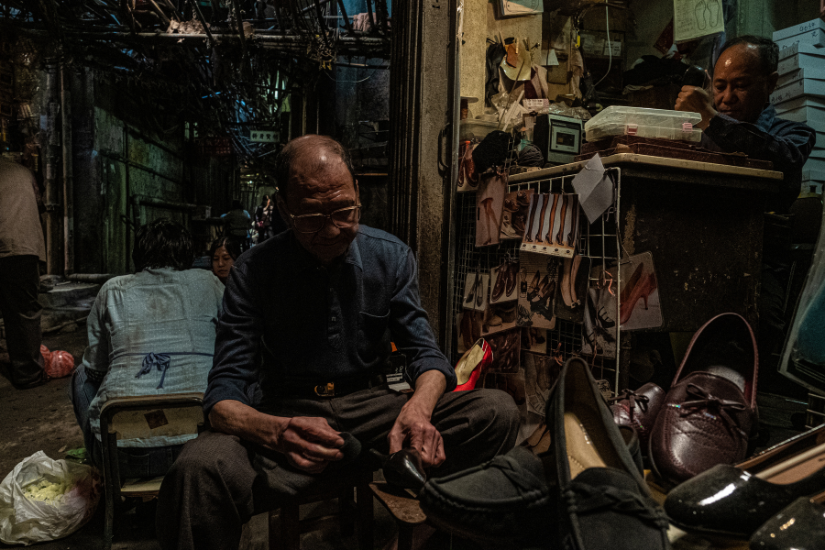

In the “Making of Special Feature: Artistic Details” segment, you can glimpse the complexity of the urban scene and its meticulous production process.
The team built the fortress in a moving castle style, using several large venues and studios, such as the Sai Kung Shing Fung Studios, Shaw Brothers Studios, and the Tai Tak Public School in Ping Shan, Yuen Long, among others. Some scenes were constructed in Ho Chung and Yuen Long, also utilizing real locations in Hong Kong such as Nathan Road and the Fruit Market. For example, the Tai Tak School was transformed into temples, film studios, and tea restaurants within the story, and various items from different eras were collected from all over Hong Kong, such as soda machines and dismantled old building stairs, in order to recreate the appearance of the fortress city at that time.
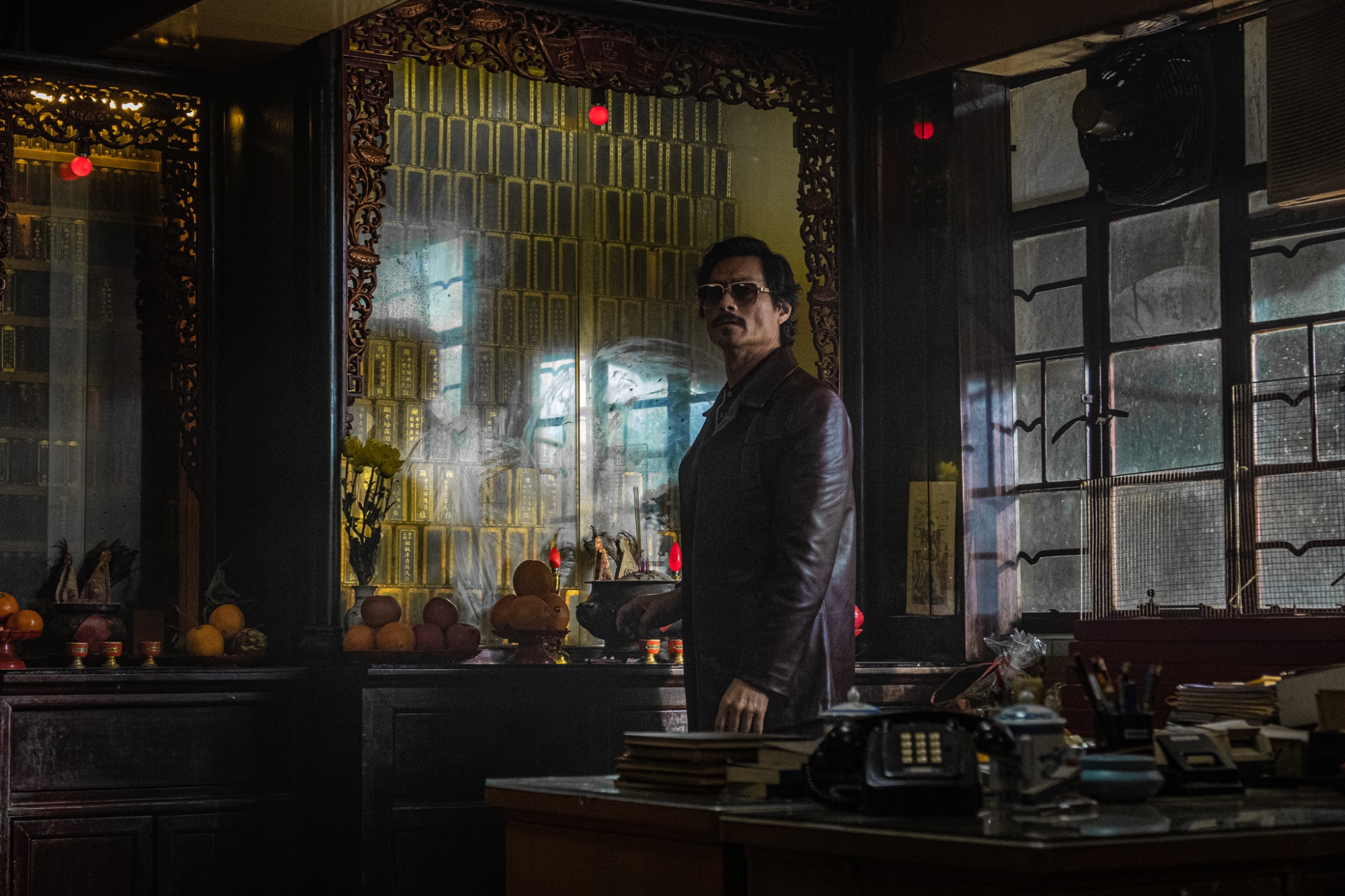
Even the art director, Mak Kwok-keung, expressed that by referencing materials and images, this time nearly 80-90% of the village scenes were restored. However, in order to accommodate filming, when creating the main streets and those three to four-story building scenes, different filming needs were taken into consideration. Therefore, more than 10 wide 8-meter, high 8-meter scenes were created to allow the camera to move from multiple angles inside the studio. Even during the actors’ performances, they were deeply involved, such as Liu Chun-hin, who had to drive a motorcycle in the film, saying that filming in the narrow corridors of the village was a huge challenge.

One of the actors in the drama, Louis Koo, also expressed during filming, “From shooting to conceptualizing the entire village, I find it unbelievable. Seeing this filming scene, it is truly breathtaking.”
The restoration of the urban village scene is so high that not only does it bring familiar scenes back to life, but it also adds a touch of Hong Kong’s grassroots scenery and experience, allowing the audience to deeply feel the state of the former urban village. The art production team really deserves credit.
2. Full of Hong Kong-style “violent aesthetics”
The most sensational aspect of “The Siege of Kowloon Walled City” is undoubtedly the first released movie trailer and poster.
In the promotional video, we can see the muscular figure of Raymond Lam carrying fire water cans and gas tanks, shuttling through the streets, shops, and hair salons of the city, while the curly-haired and stylish Liu Junqian rides a motorcycle through the narrow alleys of the city filled with wires and pipes. Then comes the earth-shattering action scenes, especially when Raymond Lam dances with double hammers to take on ten opponents, twists his waist to lift and strike his opponents, swiftly subdues enemies with high-speed movements, and counters Liu Junqian’s knife attacks with bare-handed combat. The film is filled with tense, exciting martial arts action, one-on-one battles, and intense fighting scenes. Liu Junqian, who plays “Xin Yi,” is filming action scenes for the first time, and has become a popular search term because of it.

The film team also invited Kenji Guigai (Kenji) to serve as the action director, using his highly professional martial arts team to tailor amazing action scenes for the actors in this film; in order to achieve realism, the actors also underwent at least one month of training focusing on their punches, kicks, basic movements, and physical fitness. One of the “Four Little Tigers” Hu Zitong even shared that basically every day of filming involved intense shooting for fifteen to eighteen hours straight, so the physical demands on the actors are extremely high, to the point where cheeks were injured and required 15 stitches.
Watching the “Making of Action Scenes” allows for a closer appreciation of the male actors’ performances: Raymond Lam demonstrates agility, leaping and wielding dual axes to take on multiple opponents, while Michael Miu rides a flying motorcycle, Hu Zi brandishes a samurai sword with grace, Zhang Wenjie performs aerial splits, and there’s also Sammo Hung and Louis Koo fighting together, showcasing extraordinary martial arts skills in their action scenes, making viewers’ blood boil with excitement, and becoming the center of attention.

Director Cheng Baorui revealed that, “My concept is, like reading Hong Kong comics, there should be more than reality, it should have a comic book feel to the action. Some designs can be bold, but when filmed, they need to be realistic.” Action director Guigai Kenji also stated that, through many trials and errors, they found the positioning of the action. He said, “On the first day, we had to film the tornado killer move, we tried many times, and when we filmed it, we found the feeling. Every move by Ge Sheng is full of true strength, Brother Hong Jinbao will do his best, it is the most beautiful thing.”
I hope that the training of that month will make those who understand boxing feel real, and the audience can not only see the impact, but also feel the emotions under the punches and kicks.
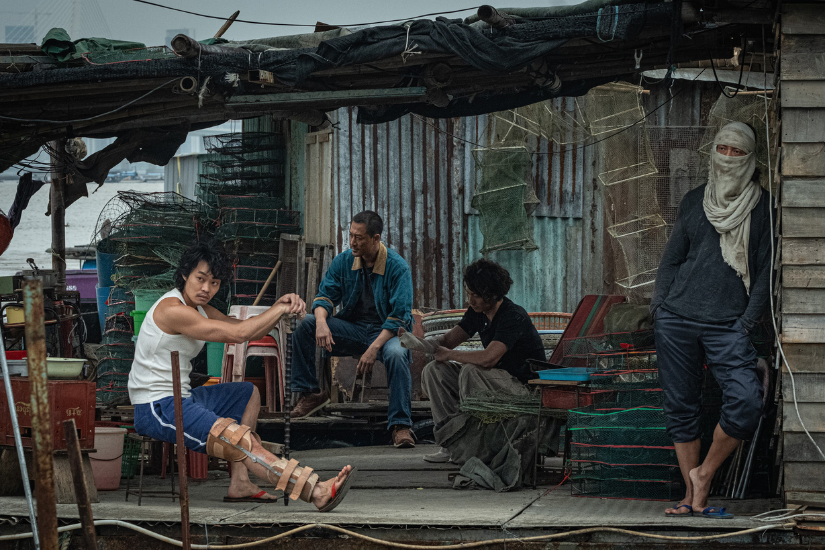
So, these crazy comic-style action scenes not only bring a sense of depth and color to the characters in the original story by Yu Er, but also highlight the aesthetics of martial arts action. Even veteran action directors like Sammo Hung and Louis Koo praised the actors for “fighting beautifully,” making it a rare action film in recent years.
Three, The epitome of life in the 80s.
When it comes to “Kowloon Walled City,” one cannot help but mention its extremely dense population in that small area.
The “Kowloon Walled City,” which was only about 4 football fields in size, was once the most densely populated area in the world. According to a government survey released in 1987, at its peak before demolition, it housed up to 33,000 people. Calculated based on the city’s area of 0.026 square kilometers, the population density was 1,269,230 people per square kilometer, more than 9 times higher than the highest population density in Mong Kok (130,000 people per square kilometer). Additionally, there have been reports that many celebrities have lived in the city, including Qin Pei, Kenneth Tsang, the Shaw Brothers, director Johnnie To, and actor Anthony Wong.
In what appears to be a chaotic environment, up to 20-30 streets, units of different uses are scattered and crazily combined together, but in reality, it is orderly inside, with even a passage that runs through the entire Kowloon Walled City, quietly divided into “East Evil West Right” (meaning: illegal or shady activities are concentrated in the east, while the west is where normal residential life takes place).
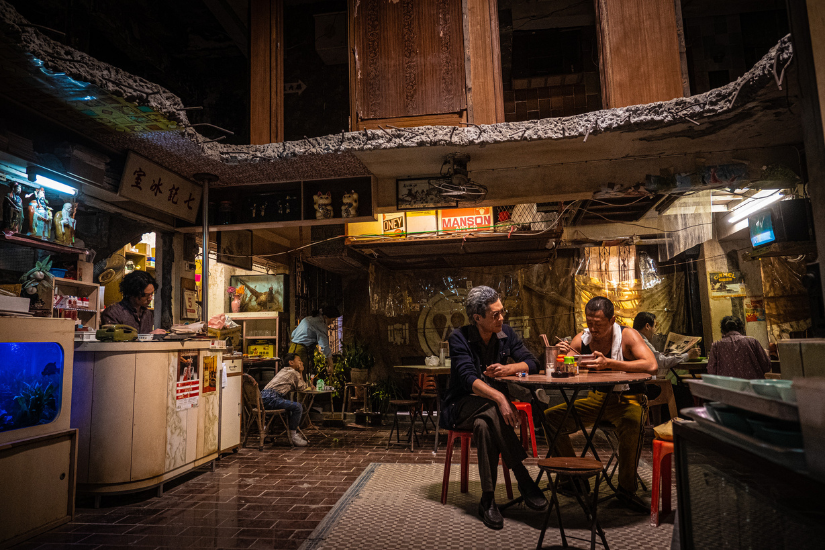
After all, facing the complex “three not governing” situation where the Hong Kong government dares not to manage, the British government does not want to manage, and the Chinese government cannot manage, in the rapidly developing Hong Kong at that time, the Kowloon Walled City gradually became a concentration of crime and a slum, with rampant prostitution, gambling, drugs, and brothels everywhere. The “Lung Chun Gambling House” at that time was the largest and most famous gambling house in the Kowloon Walled City.
However, in the urban villages of the 1980s, although small, they were fully equipped with everything needed for the daily lives of the residents. In addition to numerous unlicensed Chinese and Western medical clinics, there were also residences, schools, factories, offices, markets, grocery stores, hair salons, noodle stalls, pork shops, and various handicrafts.
Especially as the industry was developing rapidly at that time, more and more factories were opening in the walled villages. These factories, located within the walled villages, did not require licenses, and labor and rent were relatively cheap, making them an alternative business opportunity. As a result, food production factories gradually replaced drug stores, although the hygiene conditions were not optimistic. Among them, the fish ball manufacturing factory was the most famous, accounting for eighty percent of the total supply in Hong Kong.
The high population density and serious illegal structures have not only led to various strange shops, becoming urban wonders, but also resulted in insufficient water supply, with water pressure not reaching high-rise units, and even frequent water cuts. Therefore, the residents set up “street taps” underground for water collection and washing, and implemented water supply schedules within the walled city, allowing residents to orderly carry water buckets downstairs to bring water home, creating a vibrant community atmosphere. Lam Ka Tung has also shared his experience of living in the walled city in the past. Living on the 12th floor without an elevator, his most vivid memory is coming home from school every day with a red plastic bucket, waiting at the street corner to collect water.

The documentarians who entered the walled city to film – Canadian photographer Greg Girard and British architect Ian Lambot – once said after their experience that the Kowloon Walled City was simply a community where the working class lived and worked, with an unusual environment but ordinary life. Through film, this aspect of the walled city can be better presented, as director Cheng Po-lui said: “The walled city provides an opportunity for some people who cannot afford to live in the city or are relatively poor to survive in Hong Kong. We want to change everyone’s impression of the walled city. People think the walled city is lawless, full of vice, gambling, and prostitution, but in fact, the walled city in the 1980s was not like that. It was like a big factory, where everyone put down roots. It was a microcosm of Hong Kong. In the 1980s, everyone worked hard. In short, working hard would lead to a livelihood. It might not make you rich, but you could at least have two meals. The walled city allows you to catch your breath, overcome difficulties, build a good life for yourself, and stay in Hong Kong.”
Four, Only for living – the human touch exclusive to Kowloon Walled City
This place, where people from all walks of life gather, is actually most intimidating not because of the dim, chaotic, and harsh environment, but because of the smell. Due to the overcrowding, lack of space, and poor sanitation, everyone is too overwhelmed to care, so everyone living in the walled city gradually becomes accustomed to the smell.
Do you think that the walled village only has a bad smell? Then you are wrong.
In addition to a touching story of brotherhood, the film also focuses on the living conditions of those residing in the city slums. For example, the character Chen Luojun accidentally finds himself in this place, interacts with different neighbors, and feels the care of everyone while working here. In fact, they are all flesh and blood people. Even actor Raymond Lam, after portraying the role, expressed, “What everyone (residents of the city slums) is seeking is just a basic living. Those outside the city slums only have a superficial understanding of them. When everyone goes to the entrance of Kowloon Walled City, they all feel like there is a boundary.”
Actually, like every other Hong Kong resident outside the walled city at that time, they gathered with their neighbors in small shops to happily watch TV, or looked up to see planes taking off and landing clearly at Kai Tak Airport, listening to the deafening roar of airplane engines. These are all nostalgic memories of Hong Kong for the people of that generation.
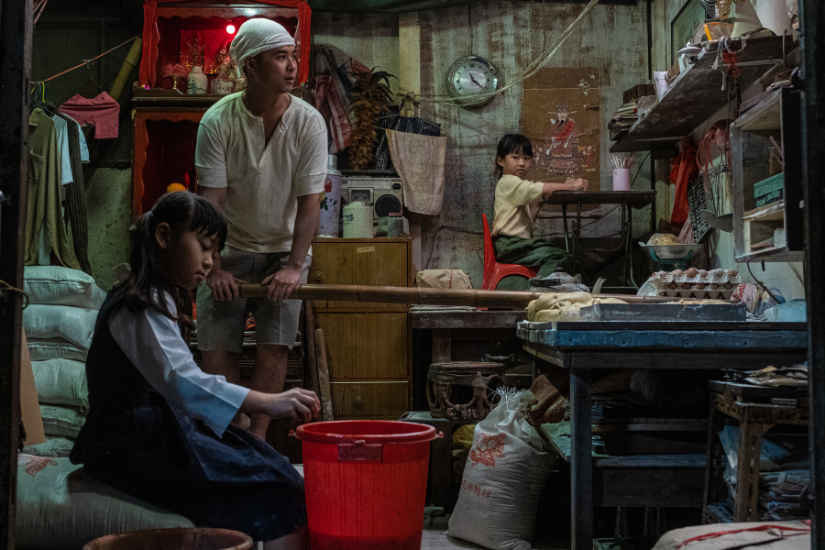
Louis Koo (as Hurricane) said: “In fact, the old neighborhood is a memory, like how you loved eating your mom’s home-cooked dishes when you were young, and you can never taste that flavor anywhere else because only mom can make it. No matter where you live in the future, this memory will never change.”
Beyond restoring the scene, it also restores the real-life scenes of contemporary people, making people unable to help but recall the past. Under the surface of the three religions and nine streams, there are more stories about the “can’t leave, can’t stay” Hong Kong sentiment, which is a place for a generation to settle down. This side of mutual assistance and warmth is exactly the part that people overlook; and this sense of loyalty and human touch is definitely a major focus in the movie.
5. Cross-media Collaboration
Zheng Baorui Film x Yu Er Original Novel x Situ Jianqiao Comic
The ultimate focus is on the work itself. Director Zheng Baorui pointed out that this is a collaboration that balances the novel version, the comic version, and the movie version.

The film version combines adapted novels and comics, of course, there are also unique creative content, styles, and actions in the film version itself. Director Cheng Po-sui said: “It’s rare to be able to collaborate with creators Yu and Jian Qiao. They gave me a lot of space. Yu had only one request, not to change the original story and character relationships, as well as the brotherhood in it. Jian Qiao allowed me to balance his comic world with my film domain, whether in style or fighting, realistic yet with a bit of comic exaggeration. So I would describe this as a very successful cross-media collaboration between novels, comics, and films.”
This serious and rigorous work of extremely high aesthetic level presents many beautiful aspects of the city – from the place where the responsibility of defending the country is shouldered to the place where generations of people settle and take root, it is full of Hong Kong flavor.

